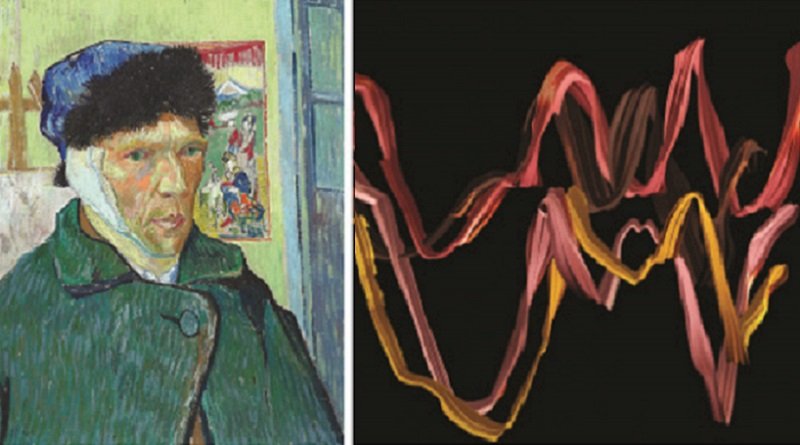What a brainwave
Have you ever wondered how much people really enjoy going to an art gallery?
In a world first, a national art charity has trialled new technology that can visualise the impact of art on human brainwaves in real time and in 3D, writes Claudia Lee
The ground-breaking project from Art Fund reveals how people’s brains are stimulated when they experience art in museums and galleries, hoping to answer the question of the fundamental value of art.
The technology was trialled by members of the public for the first time last week at the Strands’ Courtauld Gallery in Somerset House.
Those taking part walked through the gallery, browsing artworks by the likes of Vincent Van Gogh, Èdouard Manet, Claude Monet and Paul Cézanne while connected to an electroencephalogram (EEG) monitor and watched as their brain waves were translated in different colours onto a 3D screen.
Will Macneil, creative director of The Mill – the special effects company that created the system – said: “When a user is more alert, the ribbons become wider, or when they are trying to make sense of something confusing the ribbons start to spiral and weave.
“When the viewer sees something they recognise, bright highlights appear.”

The project was commissioned by Art Fund to illustrate the impact art can have on people’s brains and emotions to encourage people to visit museums and galleries.
Research commissioned by Art Fund found that while 95 per cent of UK adults agree that visiting museums and galleries is beneficial, four in 10 visit less than once a year and around one in six believe that art has no impact on them.
However, the technology on show at the Courtauld Gallery demonstrated the clear and immediate impact art can have on the human brain, and how varied artworks can make you feel completely differently.
For example, when people trying out the headset took in Van Gogh’s Self Portrait with a Bandaged Ear, a clearly different pattern of brainwaves was shown on the screen compared to when they looked at Leon Kossoff’s Shell Building Site and Matthew Arnold Bracy Smith’s Lilies in a Jar.
Dr Ahmad Beyh, a neuroscientist and postdoctoral fellow at Rutgers University, said: “We know that when a person views something that they find beautiful, for example, a face or an abstract art painting, their brain’s pleasure centres light up and its visual sensory centre is engaged more intensely.
“Studies suggest that this is accompanied by a release of dopamine, which is also known as the feel-good neurotransmitter.”
The technology’s results are also reflected in a survey looking at how these paintings make the UK public feel.
When viewing the Van Gogh painting, those surveyed said they felt ‘curious’ and ‘intrigued’ compared to feelings of relaxation they felt when looking at Matthew Arnold Bracy Smith’s floral display.
Art Fund director, Jenny Waldman, said: “We want to encourage everyone to share in great art and culture.
“By visualising the way engaging with amazing art and objects can truly impact us, we hope we will inspire more people to explore museums and galleries on their doorstep”.
Website: www.courtauld.ac.uk
Picture: Van Gogh’s self-portrait alongside brainwaves. Picture: Art Fund / Hydar Dewachi
Everyone at the South London Press thanks you for your continued support.
Former Housing Secretary Robert Jenrick has encouraged everyone in the country who can afford to do so to buy a newspaper, and told the Downing Street press briefing:
“A FREE COUNTRY NEEDS A FREE PRESS, AND THE NEWSPAPERS OF OUR COUNTRY ARE UNDER SIGNIFICANT FINANCIAL PRESSURE”
If you can afford to do so, we would be so grateful if you can make a donation which will allow us to continue to bring stories to you, both in print and online. Or please make cheques payable to “MSI Media Limited” and send by post to South London Press, Unit 112, 160 Bromley Road, Catford, London SE6 2NZ






